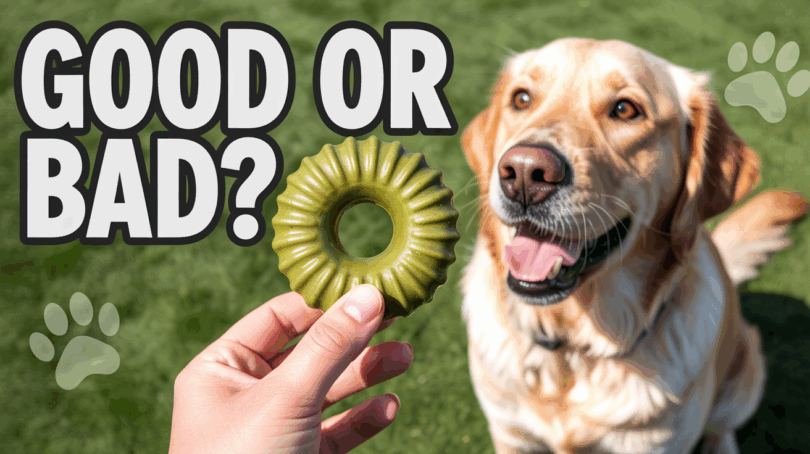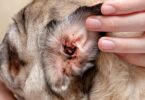Over 80% of dogs show signs of dental disease by age three. This startling statistic highlights why pet parents prioritize oral hygiene for their furry companions. Enter Greenies—the bright green chews lining store shelves nationwide. But do these treats truly deliver on their promises?
Veterinary-approved and endorsed by the Veterinary Oral Health Council (VOHC), these dental treats claim to scrub teeth, fight tartar, and combat bad breath. Their unique texture and shape aim to mimic brushing during chewing sessions. Many owners report cleaner teeth and happier pups after regular use.
Yet questions linger. Some reviews mention digestive issues or choking risks, particularly for aggressive chewers. Others wonder about ingredient quality and nutritional value. This guide cuts through the noise, examining scientific backing, real-world experiences, and expert recommendations.
Whether you're a first-time pet owner or a seasoned caregiver, understanding the pros and cons helps make informed choices. Let’s explore how these chews work, their potential benefits, and practical tips for safe use.
What Are Greenies and How Do They Work?
Maintaining canine dental health requires more than occasional brushing. These specialized dental chews combine mechanical action with natural ingredients to tackle oral issues. Their toothbrush-like shape and textured surface reach between teeth and along gumlines during chewing sessions.
Understanding the Chewing Mechanism
As pets gnaw, the treat's ridges scrape away soft plaque before it hardens into tartar. This scrubbing motion mimics brushing while encouraging saliva production. Increased saliva flow naturally neutralizes harmful bacteria and washes away food particles.
VOHC Approval and Ingredient Benefits
Backed by the Veterinary Oral Health Council (VOHC), these chews meet strict standards for reducing plaque. Key components like parsley and chlorophyll combat bad breath at the source. The formula avoids artificial additives, focusing on digestible proteins and vitamins that support overall wellness.
Available in sizes from petite to large, these treats adapt to different breeds and chewing styles. Their dual function as dental aid and reward makes them a practical choice for busy pet parents. This foundation helps evaluate both their effectiveness and safety in later sections.
Dental Benefits and Nutritional Value of Greenies
Canine dental health impacts more than just fresh breath—it’s a gateway to overall wellness. These chews tackle two critical needs: mechanical plaque removal and nutritional supplementation. Let’s break down how they support both oral hygiene and systemic health.
Improved Oral Hygiene and Tartar Reduction
Daily chewing action scrapes away soft plaque from dog teeth before it hardens into tartar. A VOHC-approved study showed a 60% reduction in buildup over six weeks. The textured surface reaches between teeth, mimicking brushing motions many pets resist. Healthier gums and lower periodontal disease risks follow consistent use.
Fresh Breath and Vitamin Enrichment
Natural ingredients like chlorophyll neutralize sulfur compounds causing bad breath. Added vitamins A, E, and D3 strengthen immune function while supporting coat health. Owners often notice cleaner teeth and brighter smiles within weeks of introducing these chews.
While not a replacement for brushing, these treats complement routine dental care. Their balanced formula meets AAFCO standards, ensuring safe digestion alongside oral benefits. Veterinarians recommend pairing them with annual cleanings for optimal results.
Are greenies good for dogs? Examining Their Efficacy and Impact
The battle against plaque in dogs requires innovative solutions. Dental chews aim to supplement traditional brushing by combining mechanical action with palatable formats. But how well do they perform under real-world conditions?
Effectiveness in Cleaning Dog Teeth
VOHC-approved studies reveal these chews reduce plaque by up to 60% when used daily. Their ridged texture scrapes away soft buildup, particularly on premolars and molars. Aggressive chewers may experience better results than gentle nibblers, according to veterinary dental reports.
User testimonials highlight visible tartar reduction within weeks. One Labrador owner noted cleaner back molars after switching from standard biscuits. However, some smaller breeds show less improvement due to shorter chewing sessions.
Compared to brushing, these treats reach difficult areas but lack fluoride benefits. They outperform water additives in physical debris removal yet shouldn't replace professional cleanings. The American Veterinary Dental College recognizes their supplementary role in oral health routines.
While effective for many, results vary by chew duration and jaw strength. Pairing them with enzymatic toothpaste creates a robust defense against periodontal issues. This balanced approach prepares owners to weigh benefits against potential risks discussed next.
Potential Risks and Safety Considerations
Safety should always come first when introducing new treats to your dog's routine. While dental chews offer oral benefits, improper use may lead to complications requiring veterinary attention. Awareness of these challenges helps pet owners make informed decisions.
Choking Hazards and Digestive Issues
Smaller breeds face higher risks with improperly sized chews. A Chihuahua owner reported an emergency visit after their pet swallowed a large piece whole. Always choose treats matching your dog's weight and chewing style.
Gastrointestinal problems can occur if fragments cause blockages. Vets recommend monitoring stool consistency and discontinuing use if diarrhea or vomiting appears. Slow feeders or puzzle toys encourage safer chewing habits.
Allergic Reactions and Overfeeding Concerns
Some dogs develop sensitivities to ingredients like glycerin or wheat. Itching or paw licking may signal intolerance. Consult your veterinarian if unusual symptoms persist after treat consumption.
Overfeeding contributes to weight gain and reduces plaque-fighting effectiveness. Stick to one chew daily unless directed otherwise. Pair these treats with regular gum checks to spot early signs of dental disease.
Supervision remains critical during chewing sessions. Remove small fragments before they become hazards. When in doubt, ask your vet about alternative solutions for dogs with specific health conditions.
Choosing the Right Greenies for Your Dog
How do you pick the perfect dental chew for your pup? Matching the product to your dog's needs maximizes benefits while reducing risks. Three key factors guide this decision: physical fit, taste preferences, and life stage requirements.
Size, Flavor, and Life Stage Considerations
Selecting the correct size prevents choking hazards. Follow weight guidelines on packaging—small breeds under 25 pounds need petite options, while large dogs require jumbo chews. Aggressive chewers may benefit from firmer textures that last longer.
Flavor variety keeps dogs engaged. Options like original, blueberry, or chicken cater to picky eaters. Puppy formulas offer softer textures for developing teeth, while senior versions support joint health. Always check age recommendations on labels.
Tips from Veterinarians
Vets recommend supervising chew sessions and removing small fragments. Introduce new products gradually to monitor digestion. Pair these treats with annual dental checkups for comprehensive care.
Consult your veterinarian if your dog has food sensitivities or medical conditions. Trusted brands provide detailed sizing charts and ingredient lists to simplify choices. Proper selection turns daily chewing into an effective oral care ritual.
Integrating Greenies into a Comprehensive Dental Care Routine
Building a complete oral care plan requires strategic use of dental treats alongside traditional methods. These chews work best when paired with consistent brushing and professional cleanings. Start by establishing predictable daily habits that keep your pet's teeth clean and breath fresh.
Daily Monitoring and Safe Administration
Introduce dental chews during calm moments when you can supervise. Watch for proper chewing technique—steady gnawing prevents gulping. Remove small fragments immediately to avoid choking risks.
Schedule treats after meals when dogs naturally want to chew. Pair this ritual with brushing sessions for maximum impact. Use a timer to ensure your pet spends adequate time working through the textured surface.
Never substitute these products for brushing dog teeth. Instead, view them as tools to extend the benefits of manual cleaning. Alternate between morning chews and evening brushing to maintain all-day freshness.
Consistency matters most. Offer one chew every day at the same time to create routine. Track gum health weekly, noting any redness or swelling. Combine these practices with vet-approved water additives for layered protection.
Remember: dog chews complement care but don’t replace professional oversight. Book annual dental exams to catch hidden issues early. With smart integration, you’ll turn quick snacks into powerful allies for lasting oral health.
Final Thoughts on Greenies and Canine Dental Health
Balancing dental care and treat safety remains crucial for pet parents. Veterinary Oral Health Council-approved chews reduce plaque by 60% in studies while freshening breath through natural ingredients. Daily use helps scrub teeth and minimize tartar buildup when paired with brushing.
Monitor pets closely during chewing sessions. Choking risks increase if treats break into large chunks. Digestive problems or allergies may occur, requiring immediate vet consultation. Always match product size to your pet’s weight and chewing habits.
Integrate these dental aids into a full care routine. Combine them with weekly toothbrushing and annual cleanings. Proper sizing and supervision ensure both effectiveness and safety.
Consult your veterinarian before starting any new oral regimen. They’ll assess individual needs, from gum disease risks to dietary restrictions. While chews offer dental benefits, your pet’s overall health must guide every decision.
Follow package instructions carefully and maintain consistency. A proactive approach to oral care prevents costly health issues long-term. Trust evidence-backed solutions, but never hesitate to seek professional advice for your furry friend.
FAQ
Are Greenies approved by veterinary dental experts?
Yes, Greenies carry the Veterinary Oral Health Council (VOHC) seal, meaning they meet strict standards for reducing plaque and tartar. Veterinarians often recommend them as part of a proactive dental care plan.
How do dental chews like Greenies improve my dog’s oral health?
The textured surface scrubs teeth during chewing, mechanically removing plaque before it hardens into tartar. Combined with enzymes that target bacteria, they help prevent gum disease and bad breath.
Can puppies or senior dogs safely eat Greenies?
Greenies offers formulas tailored to life stages. Puppy versions are softer for developing teeth, while senior options address sensitive gums. Always match the chew size to your dog’s weight and supervise initial uses.










Leave a Comment